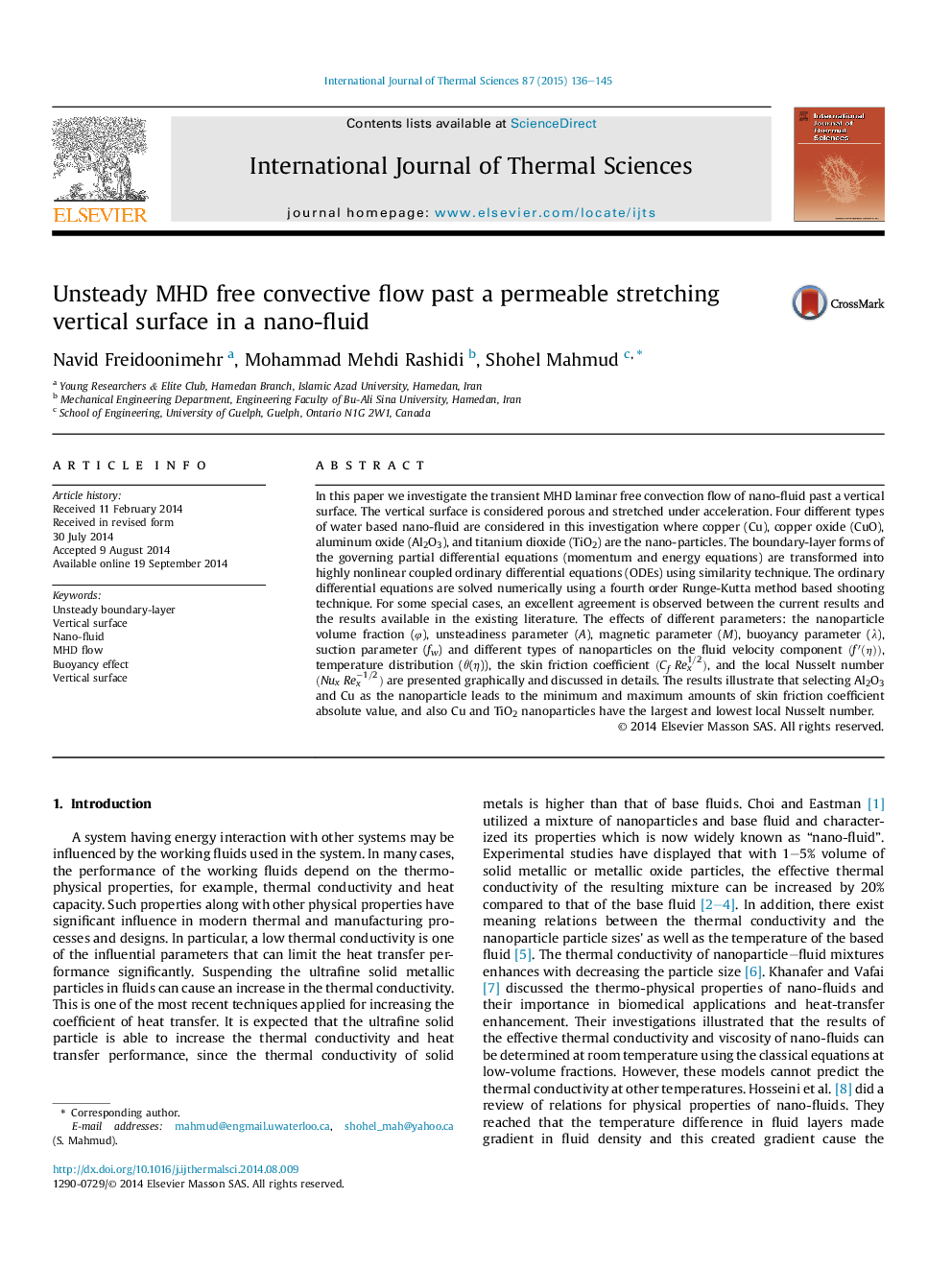| کد مقاله | کد نشریه | سال انتشار | مقاله انگلیسی | نسخه تمام متن |
|---|---|---|---|---|
| 668616 | 1458735 | 2015 | 10 صفحه PDF | دانلود رایگان |

• Nusselt number increases with increasing nanoparticle volume fraction.
• Water–Al2O3 nanoparticle leads to the minimum amounts of skin friction coefficient.
• Water–Cu nanoparticle leads to the maximum amounts of skin friction coefficient.
• Water–Cu nanofluid shows largest local Nusselt number.
• Water–TiO2 nanofluid shows the lowest local Nusselt number.
In this paper we investigate the transient MHD laminar free convection flow of nano-fluid past a vertical surface. The vertical surface is considered porous and stretched under acceleration. Four different types of water based nano-fluid are considered in this investigation where copper (Cu), copper oxide (CuO), aluminum oxide (Al2O3), and titanium dioxide (TiO2) are the nano-particles. The boundary-layer forms of the governing partial differential equations (momentum and energy equations) are transformed into highly nonlinear coupled ordinary differential equations (ODEs) using similarity technique. The ordinary differential equations are solved numerically using a fourth order Runge-Kutta method based shooting technique. For some special cases, an excellent agreement is observed between the current results and the results available in the existing literature. The effects of different parameters: the nanoparticle volume fraction (φ), unsteadiness parameter (A), magnetic parameter (M), buoyancy parameter (λ), suction parameter (fw) and different types of nanoparticles on the fluid velocity component (f′(η))(f′(η)), temperature distribution (θ(η )), the skin friction coefficient (CfRex1/2), and the local Nusselt number (NuxRex−1/2) are presented graphically and discussed in details. The results illustrate that selecting Al2O3 and Cu as the nanoparticle leads to the minimum and maximum amounts of skin friction coefficient absolute value, and also Cu and TiO2 nanoparticles have the largest and lowest local Nusselt number.
Journal: International Journal of Thermal Sciences - Volume 87, January 2015, Pages 136–145